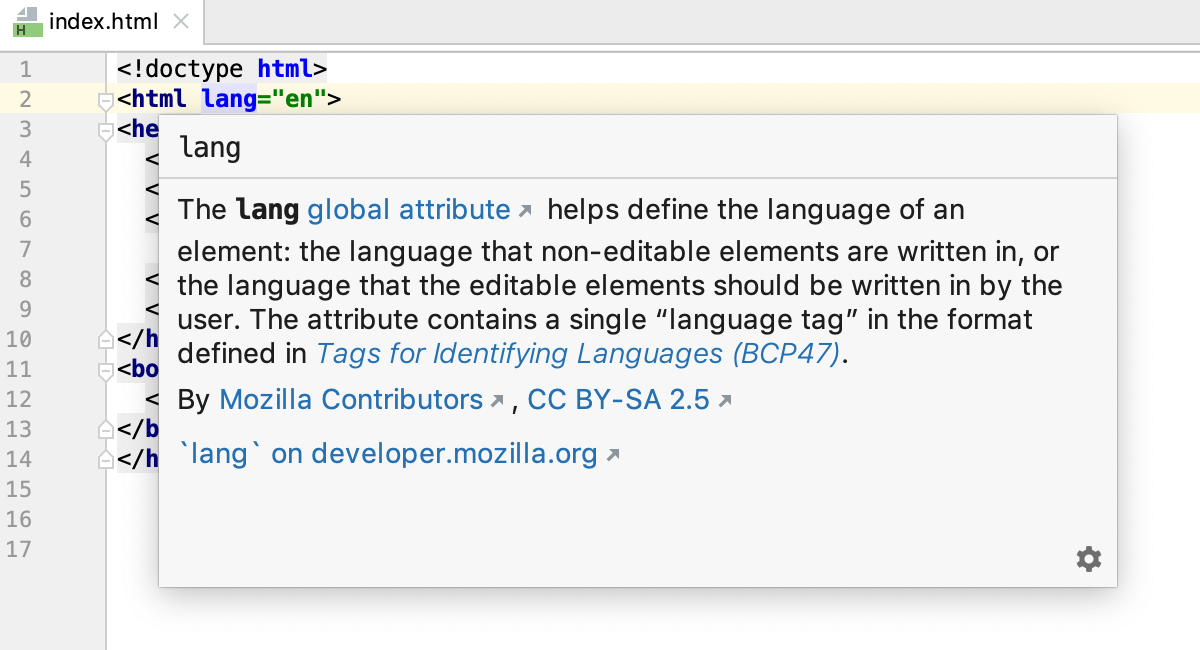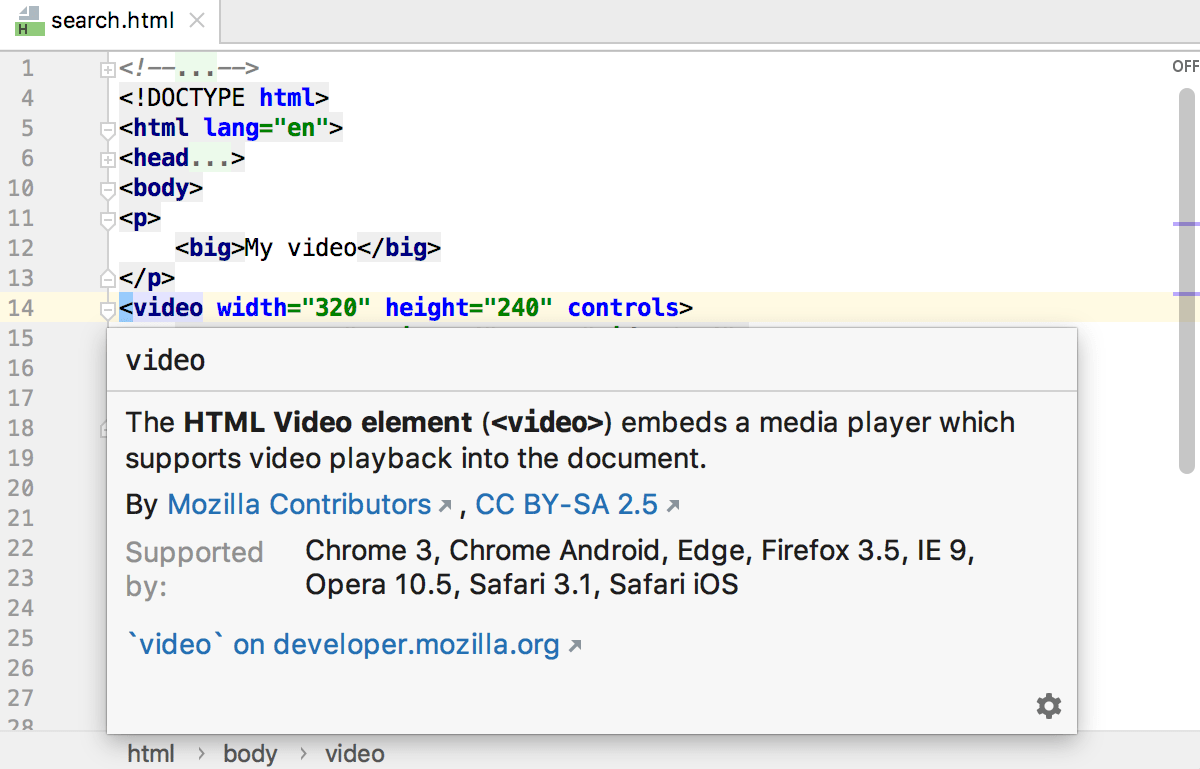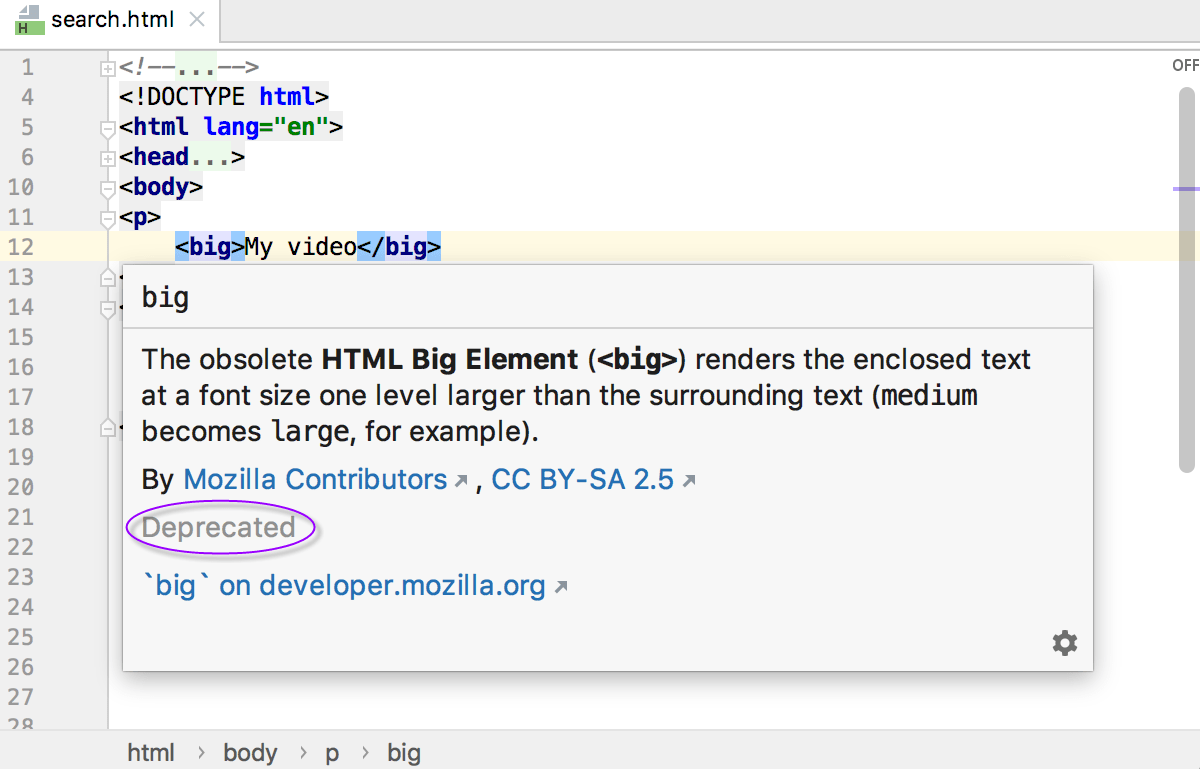HTML
GoLand brings powerful support for HTML that includes syntax and error highlighting, formatting according to the code style, structure validation, code completion, on-the-fly preview during a debugging session (Live Edit), and much more.
HTML specification is configurable with the Default HTML language level preference on the page of GoLand settings Ctrl+Alt+S. By default, specification HTML 5.0 from W3C is assumed.
Creating an HTML file
From the main menu, select , and then select HTML File from the list. GoLand creates a stub file based on the HTML file template and opens it in the editor.
Creating references in an HTML file
Inside a <script>, <link>, or <img> tag, GoLand suggests completion for the path to the file you are referencing.

Alternatively, in the Project tool window, select the JavaScript, CSS, or image file you want to reference and drag it into the HTML file. GoLand generates the <script>, <link>, or <img> tags inside <head>. For <img> tags, GoLand also generates the width and height attributes.

Documentation look-up
For most HTML tags and attributes GoLand can show you a summary from the corresponding MDN article. This summary is displayed in the Documentation popup which also shows the deprecation status of a tag or an attribute and information on its compatibility with various browsers.
To view documentation for a tag or an attribute at caret
-
Press Ctrl+Q or select from the main menu. GoLand opens a Documentation popup with a brief description of the tag or the attribute.
-
If the tag or the attribute is available in all versions of browsers, GoLand does not show any information about its compatibility.

-
Otherwise, the Documentation popup also lists the browsers and their versions that support the tag or the attribute.

-
If the tag or the attribute is deprecated, the popup also informs you about this status.

-
To open the MDN documentation for a tag or an attribute in the browser
In the Documentation popup Ctrl+Q, click the link at the bottom.
Press Shift+F1 or select from the main menu.
Previewing output of an HTML file in a browser
Select from the main menu and then select the desired browser from the list. To open the default GoLand browser, select Default.
Alternatively, hover your mouse pointer over the code to show the browser icons bar, and click the icon that indicates the desired browser:





If you have only one browser configured, just press Alt+F2.
Viewing HTML source code of a web page in the editor
Choose .
In the Open URL dialog that opens, type the URL address of the web page or choose a previously opened URL from the list.
Viewing embedded images
GoLand offers several ways to view images embedded in an HTML file. You can use navigation to source, open an image in an external graphical editor, or preview images on-the-fly.
Check and configure the appearance of the preview on the Images page.
To view an image in GoLand
Select the image file in the Project tool window and press F4.
Alternatively, position the caret at the reference to the image in the editor and press Ctrl+B
To preview an image in a popup instead of in a separate tab, select the reference to it and press Ctrl+Shift+I
To view an image in an external editor
Configure the path to the external editor on the Images page ( for Windows and Linux or for macOS).
Select the image file in the Project tool window, and choose or press Ctrl+Alt+F4.
Extracting an include file
You can extract a fragment of HTML code into a separate include file. Entire JavaScript code blocks inside a <script> tags can be extracted as well. GoLand also suggests adding references instead of duplicates of the selected fragment.
In the editor, select the code block to be extracted and choose from the main menu or from the context menu of the selection.
In the Extract Include File dialog that opens, specify the name of the include file without the extension and the directory to store it in. You can accept the predefined directory or select another one.
Click OK, when ready. GoLand extracts the selected source code into the specified file in the target directory and generates the corresponding reference in the source file.
Configuring syntax highlighting
You can configure HTML-aware syntax highlighting according to your preferences and habits.
Select the color scheme, accept the highlighting settings inherited from defaults or customize them as described in Configuring Colors and Fonts.